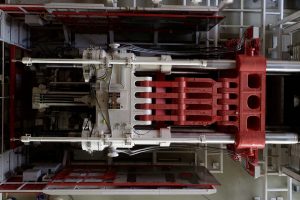- 🚗 Tesla China is ramping up its export efforts at the beginning of Q2 2024.
- 🎥 A recent drone flyover of Shanghai Southport Terminal revealed a large fleet of Tesla vehicles prepared for export.
- 🎨 A significant portion of the export fleet consists of upgraded Model 3 sedans, with many painted in Tesla’s new Ultra Red color.
- 💰 Tesla China implemented a price increase for its Model Y crossover, reflecting confidence despite increasing competition in the Chinese EV market.
- 📱 Xiaomi’s SU7, a competitor to Tesla’s Model 3, has generated significant interest in China, with long lines at showrooms reminiscent of Tesla’s early days in the country.
In the fast-paced world of electric vehicles (EVs), Tesla’s presence in China is making headlines yet again as the second quarter of 2024 kicks off. Let’s delve into the latest developments and strategies that Tesla is employing in the Chinese market.
The Surge in Export Efforts
Tesla China is wasting no time as it gears up its export efforts, signaling a robust start to Q2 2024. A recent drone flyover of the Shanghai Southport Terminal provided a glimpse of the extensive fleet of Tesla vehicles being readied for export. This move underscores Tesla’s commitment to expanding its global footprint and meeting the growing demand for electric cars worldwide.
The Model 3 Upgrade: Painting the Town Ultra Red
One notable aspect of the export fleet is the prevalence of upgraded Model 3 sedans, many of which are adorned in Tesla’s striking new Ultra Red color. This choice reflects Tesla’s keen understanding of consumer preferences and its ability to capitalize on aesthetic trends. The decision to offer the Ultra Red option, despite its additional cost, suggests that Tesla is confident in its appeal to international markets, particularly in regions like Europe and Australia.
Pricing Strategies Amidst Growing Competition
Despite facing increasing competition in the Chinese EV market, Tesla China has implemented a bold pricing strategy for its Model Y crossover. The recent price increase indicates Tesla’s confidence in its brand and product offerings, even in the face of formidable rivals. By adjusting its pricing strategy, Tesla aims to maintain its competitive edge while continuing to deliver premium electric vehicles to discerning consumers.
The Rise of Xiaomi’s SU7: A Challenger Emerges
In the midst of Tesla’s expansion efforts, Xiaomi’s SU7 has emerged as a formidable competitor to the Model 3. The SU7’s larger size and competitive pricing have captured the attention of Chinese consumers, leading to long queues at Xiaomi’s showrooms reminiscent of Tesla’s early days in the country. While the SU7 poses a new challenge for Tesla, it also underscores the vibrant competition driving innovation in the EV market.
Conclusion: Navigating a Dynamic Landscape
As Tesla continues to navigate the ever-evolving landscape of the Chinese EV market, its strategic decisions in Q2 2024 offer valuable insights into its expansion efforts and competitive positioning. By ramping up export efforts, introducing compelling upgrades, and adjusting pricing strategies, Tesla demonstrates its agility and commitment to staying ahead in one of the world’s largest EV markets.





